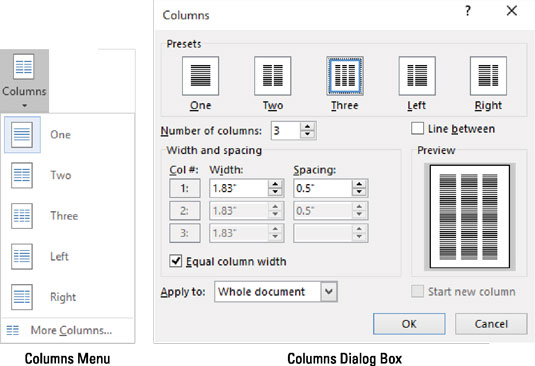You probably don't think of a document's text as a column. No, it's just text on a page, margin to margin. Secretly, however, Word 2016 looks at such text as a single column. So whether you use columns or not, Word has already formatted your document that way.
To set the number of text columns on a page, you use Word's Columns command: Click the Layout tab, and in the Page Setup group, click the Columns button. A menu appears, listing common column-formatting options, as shown on the left here.

To be more specific with column layout, choose the More Columns command, at the bottom of the Columns menu. The Columns dialog box appears, as shown on the right.
The Columns dialog box helps you to create and design multiple columns not available on the Columns menu: Use the Number of Columns box to set the quantity of columns desired. Use the Preview window to determine how the page is formatted. Click the OK button to apply the column format to the text.
Click the mouse to best position the insertion pointer on a page when working with multiple text columns. That's because the keyboard's cursor-movement keys don't operate in a predictable manner when a document uses more than one column of text.
Columns are a document-level format. Choosing a column format from the Columns button menu affects the entire document, reformatting every page to the number of columns specified.
If you need to set different column formats on different pages, split the document into sections. In that case, the column type you chose affects only the current section.
When you're working with columns and notice that Word starts acting slow and fussy, save your work!
Maximum number of columns per page? That depends on the size of the page. Word's minimum column width is half an inch, so a typical sheet of paper can have up to 12 columns — not that such a layout would be appealing or anything.





